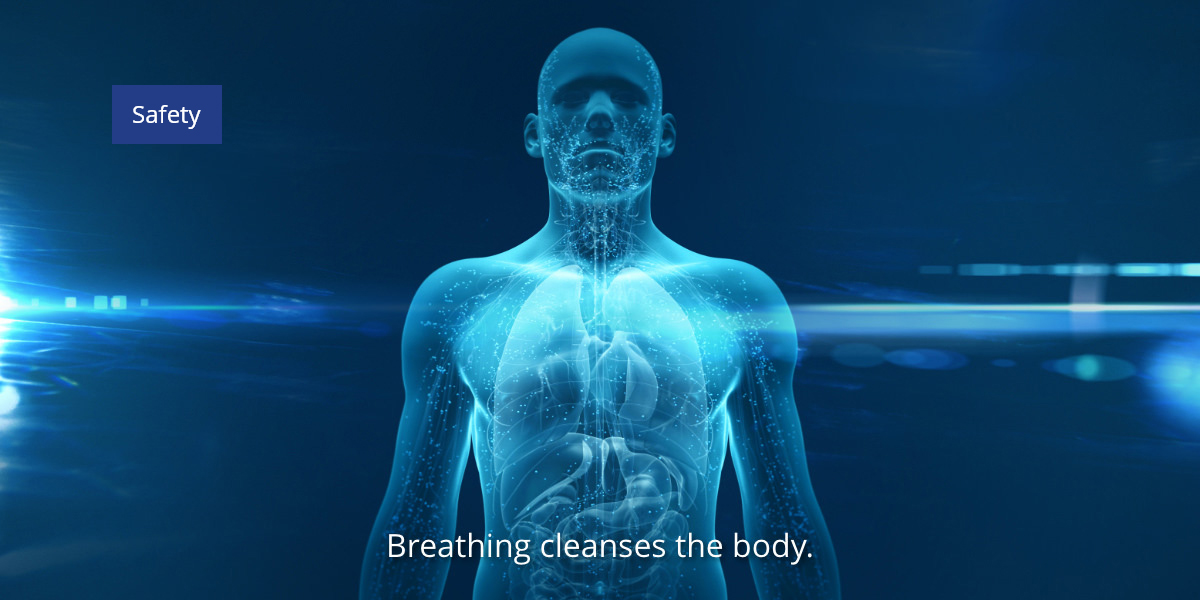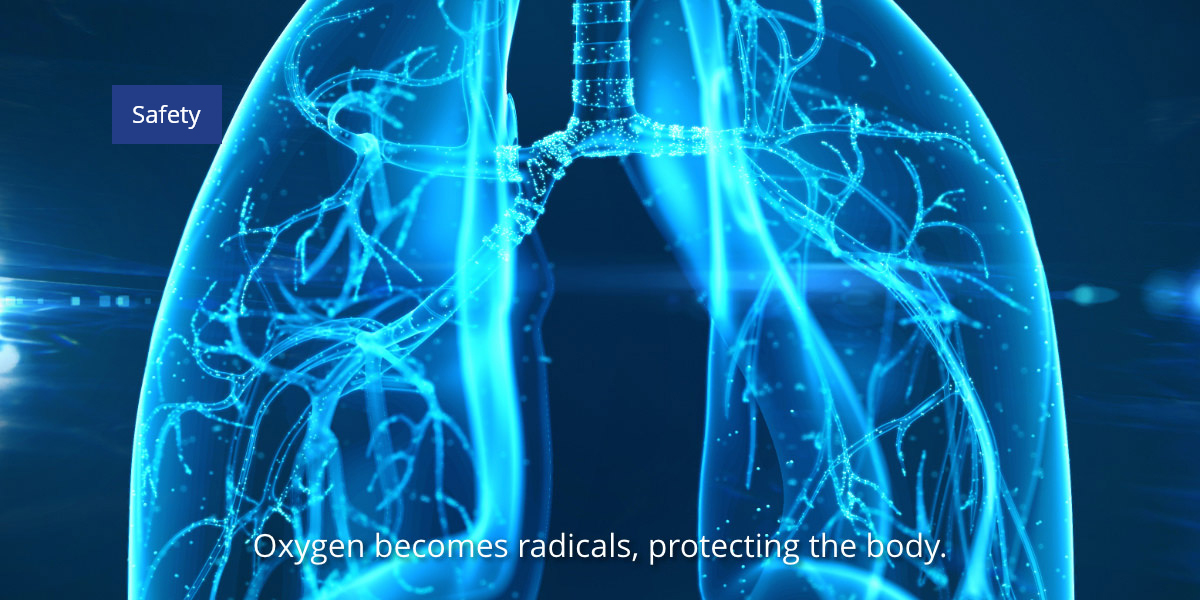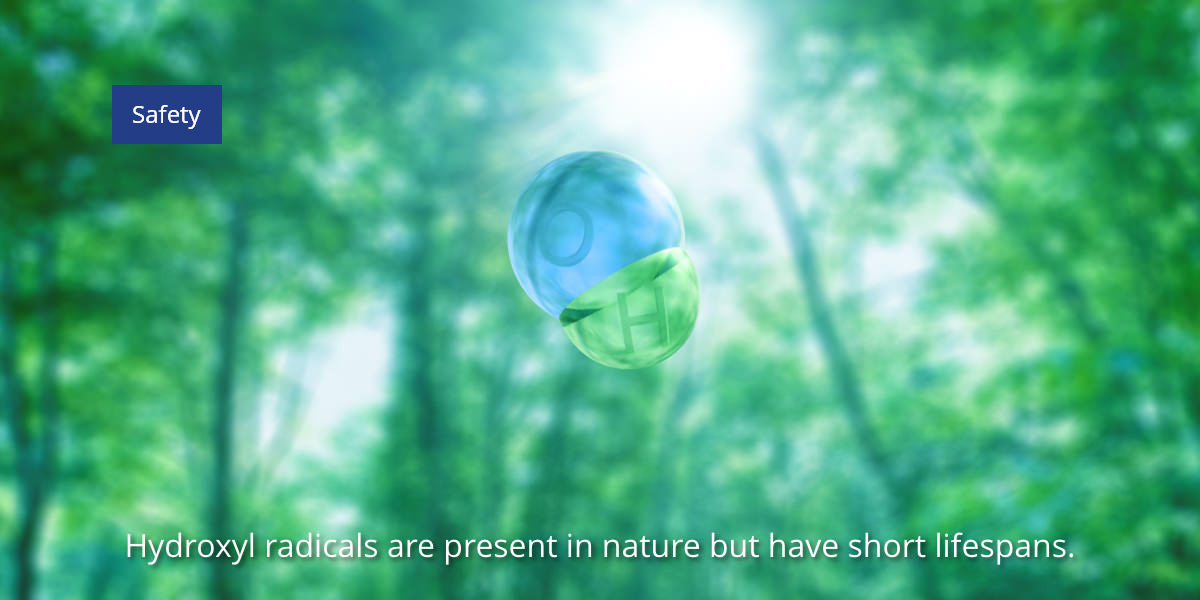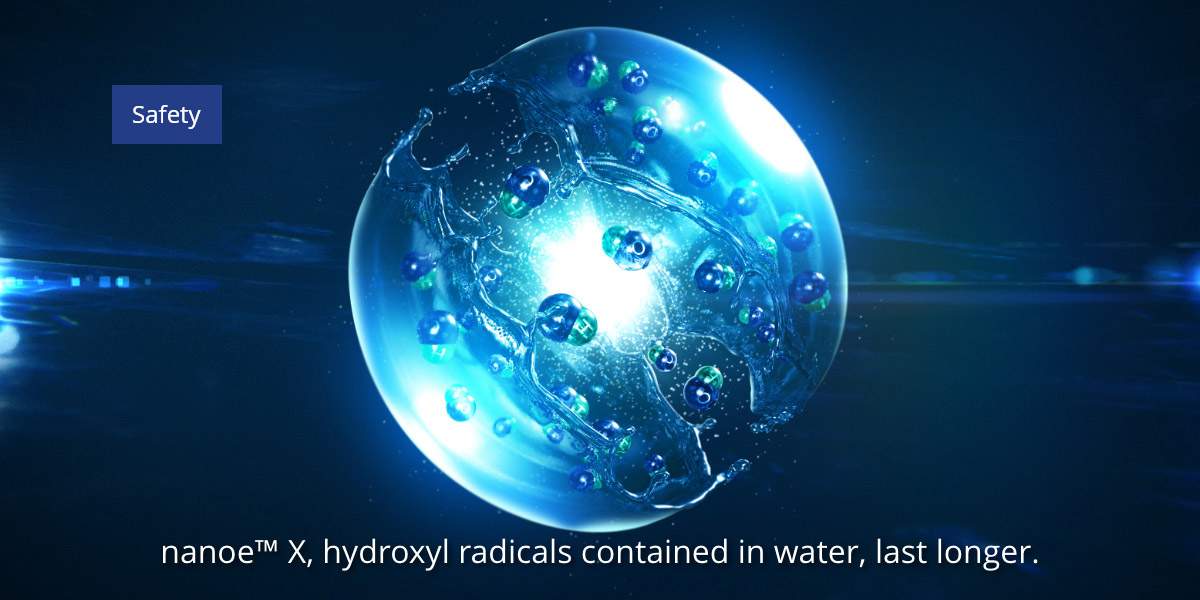In our bodies, radicals fight germs.
Indoors, nanoe™ X does the same.
The volume of hydroxyl radicals generated by nanoeTM X is 1/500,000th of the volume human beings produce by breathing.

nanoeTM X is nanoscale particle ions encapsulated with water. It is safe as it is made from water, nature. The safety tests are verified as below.
|
Test Subject |
Test name |
Testing organisation |
|---|---|---|
|
Impact on chromosomes |
Chromosome abnormality test using cultured cells |
Japan Bioassay Research Center*⁵ |
|
Impact on respiratory organs |
Repeated administration toxicity test |
Life Science Research Laboratory*⁶ |
|
Toxicological and carcinogenic impact |
Chronic toxicity and carcinogenicity combined test |
Food and Drug Safety Center, Hatano Research Institute |
|
Impact on DNA |
Comet Assay |
Food and Drug Safety Center, Hatano Research Institute |
|
Impact on male and female fertility |
Simplified reproductive toxicity test |
Food and Drug Safety Center, Hatano Research Institute |
Detail of calculation for 1/500,000th of the volume of hydroxyl radicals generated by nanoe™ X.
1. Each of us breathes in 18 kg of air a day.

2. That’s about 15 m³, or a sphere 3 meters in diameter.

3. We need our air to contain about 21% oxygen.

4. That’s about as much as is contained in 3 m³.

5. When this oxygen enters the body, 1–2% is turned into radicals. Hydroxyl radicals are one type of radical.

6. Since 2% of the oxygen we breathe turns into radicals, 0.02 L × 0.02 = 0.0004 L, so 0.0004 L of radicals are produced by a single breath.

7. At a body temperature of 36˚C, the volume of radicals produced by a single breath is, according to Charles’s law, 0.0004 (L) ÷ (22.4 × (273.15 + 36) ÷ 273.15) × 6.02 × 1023 = 9.498 × 1018

8. The radicals produced in our bodies fight every day against bacteria that can cause illness.

9. By comparison, the volume of hydroxyl radicals generated by nanoeTM X in continuous operation is about 415 trillion per 24 hours.





